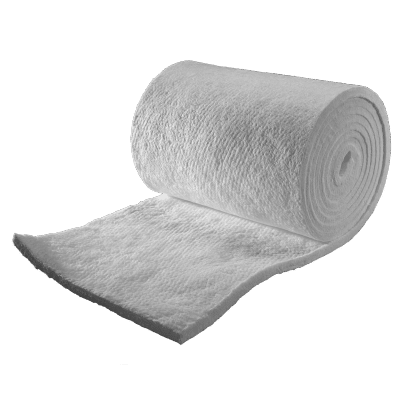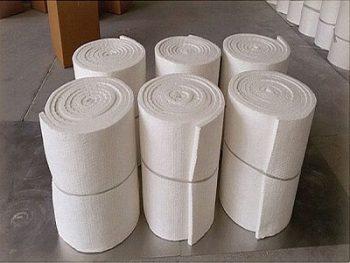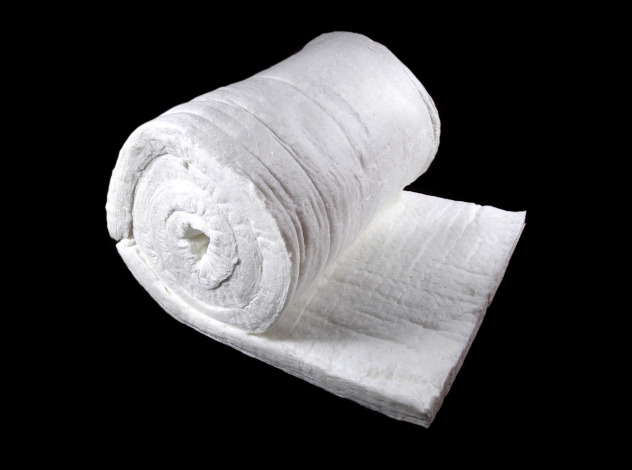CERAMIC FIBER BLANKET

Ceramic Fiber Blanket
Ceramic blanket is a refractory and flexible insulation whose raw material is bulk ceramic fibers. These flexible and long fibers are produced in various thicknesses and densities without the use of glue or any other binder by creating internal mechanical connections (needling and sewing)..
Ceramic blankets with light weight and high thermal resistance are highly stable against delamination in the air currents inside the furnace.
Ceramic blankets are also used in the manufacture of ceramic modules or ceramic modules.
The refractory blanket is available in three thermal grades: 1260, 1430 and 1600.
The most commonly used thickness of these ceramic fibers is 25 and 50 mm (1 and 2 inches),
which can be supplied in various other densities and sizes according to customer needs.
Naroon Kala Company can be supplied by this company by directly importing various types of ceramic fiber and insulation blankets in Chinese and European brands.

Contact us:
021-88811733
021-88811734
021-88811735
0910 7100915 - 0910 7100920
What is a Ceramic Blanket? Full Review, Benefits, Applications and Technical Tips
In the industrial world, refractory materials play a key role in protecting equipment, reducing energy consumption, and increasing safety. One of the most widely used and advanced refractory materials is ceramic blanket.
This material has properties that are useful in casting, ceramics, and even construction. In this article, we will fully discuss the structure, Its unique features, applications, and capabilities have made it possible
A special place in various industries such as steel, petrochemicals, benefits, installation methods and important points when buying blankets
We get to know ceramics.
Advantages of ceramic blankets
1. High thermal resistance: Ability to withstand very high temperatures without structural damage.
2. Light weight and easy installation: Quick installation without the need for complex equipment.
3. High flexibility: Ability to cut, bend and shape as desired.
4. Effective sound and thermal insulation: Significant reduction in energy loss and sound transmission.
5. Resistance to chemical corrosion and thermal shock.
6. High durability and long life even in harsh industrial conditions.
Ceramic blanket applications
Ceramic blankets have many applications in various industries:
1. Steel and foundry industry:
• Insulation of induction furnaces, electric arc furnaces, tundishes and ladles.
• Use in furnace doors and walls.
2. Petrochemical and Refinery Industry:
• Insulation of hot pipes, reactors and equipment under heat.
• Protection of equipment against sudden thermal shocks.
3. Ceramic and Glass Industries:
• Insulation inside ceramic kilns.
• Prevention of energy loss in the production process.
4. Construction and Architecture:
• Insulation of chimneys, fireplaces, fire-resistant walls.
• Use in fire-resistant projects of structures.
5. Automotive and Aerospace Manufacturing:
• Thermal protection of specific parts in industrial vehicles or flight equipment.

Ceramic blanket installation methods
Depending on the location, type of furnace or equipment, ceramic blanket installation can be done in one of the following ways:
• Installation with metal clamps or anchors (Anchoring System): for vertical walls or ceilings.
• Installation with refractory wire: in pipes and cylindrical surfaces.
• Using refractory adhesive: in light and lower temperature applications.
It is recommended that specialists and full safety equipment be used when installing ceramic blankets, as ceramic fibers can cause allergies when in contact with the skin or inhaled.

Important points when buying a ceramic blanket
When purchasing a ceramic blanket, you should consider the following:
• Required operating temperature: Choose a blanket with a thermal tolerance appropriate to the conditions.
• Density: Higher densities are usually better insulators but are more expensive.
• Thickness: Depending on the type of application and the amount of insulation required.
• Type of fibers and blanket grade: Some blankets have additives for greater resistance to corrosion or thermal shock.
• Brand and quality certificate: Buy from a reputable manufacturer with the necessary approvals.
High tensile strength
Low thermal conductivity
Easy cutting
sound insulation

High shock and heat resistance
No asbestos
Resistant to chemical corrosion and hot air flow
Features of ceramic blanket
Contact us:
021-88811733
021-88811734
021-88811735
0910 7100915 - 0910 7100920
